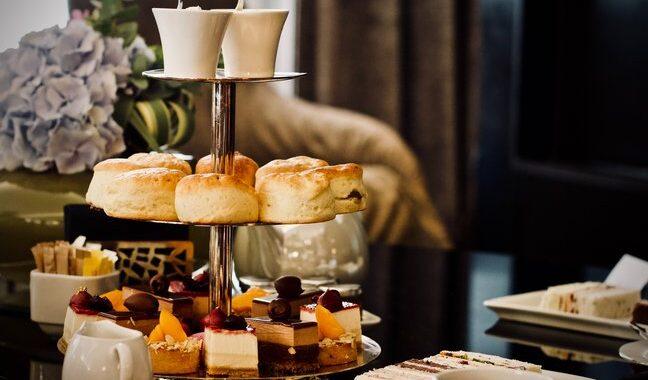We were pleased to welcome intern #147 Sophie this summer 2023. Sophie is from the United-Kingdom and is giving us her insights about tea in Britain!
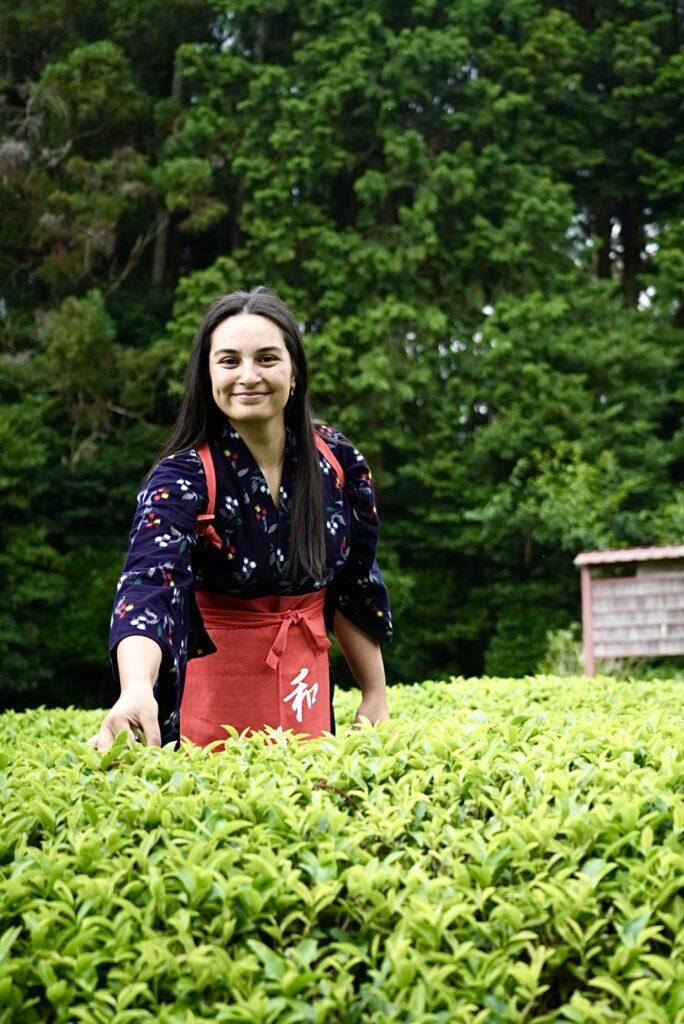
Tea In Britain
Whilst tea drinking has become almost synonymous with British culture, tea wasn’t introduced to the country until 1660, almost 900 years after the introduction of tea to Japan. Despite this somewhat late start, the size and power of Colonial Britain, and the East India Company in particular, allowed the UK to quickly become one of the largest consumers of tea per capita in the world.
A Brief History of Tea in Britain
The first reference to tea by an Englishman was in 1615 by an agent of the East India Company in Japan, to a colleague in China asking him to send “a pot of the best sort of chaw” (a phonetic spelling of the Cantonese word Cha).
Coffeehouses were already abundant in 17th Century England, where men would gather and drink coffee while discussing news and making business connections. With no alcohol being served, coffee houses were places for important discussions and scholarly debate. In 1657, Thomas Garvey was the first to serve tea at his coffeehouse in Exchange Alley in central London. Tea was regarded as a medicinal drink, in much the same way as when it was first introduced to Japan, and was lauded as curing a plethora of ailments including headaches, colds, and intestinal troubles.
It wasn’t until 1662, when Catherine of Braganza, the wife of King Charles II and Queen of England, served tea at their wedding, that it evolved from a medicinal drink, to one of high society. In contrast to Japan, where tea was the drink of choice of Samurai and Feudal Lords, in Britain tea was the drink of choice for aristocratic women, and ladies of the court.
As Britain had no trade ties with China, tea was imported from Dutch traders, who themselves traded with Chinese tea plantations. The East India Company, a British trading company which at one point was the largest company in the world, accounted for approximately half the global trade of commodities such as cotton, silk, spices, tea and opium. They also traded in slaves, and were responsible for the colonisation of India and large parts of South East Asia. The East India Company began to trade directly with China in the early 18th Century, which dropped the price of tea, and allowed it to be attainable by the middle classes, rather than just the elite. Tea and sugar became more affordable and accessible than coffee, and tea began to be imported to Britain in extremely large quantities. It is estimated that approximately 3000 tonnes (3,000,000 kg) of tea was imported to Britain in 1766.
Whilst tea was a popular drink, there were some who saw the popularity of a Chinese beverage as ‘unpatriotic’ and so opposed its consumption. In the 1820s the East India Company began the cultivation of tea plantations in the Assam region of India. Tea produced in a British colony was very well received in the UK, and the strength of the tea compared to that produced in China (Camellia sinensis. assamica, as opposed to Camellia sinensis. sinensis) was also popular. By the beginning of the 20th century, Assam was producing the most tea in the world, with London soon becoming the centre of international tea trade.
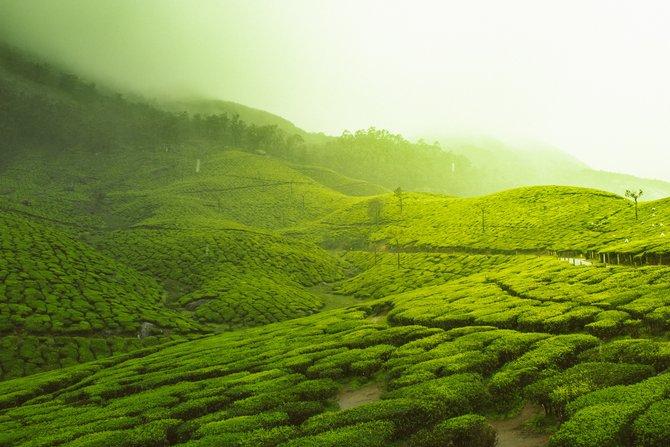
A tea plantation in India
Tea in Britain Today
Although tea drinking is said to be on the decline, with coffee becoming more and more popular, the UK is the third largest consumer of tea per capita in the world, with each person consuming almost 2 kg of tea every year. This is almost double the per capita consumption in Japan (of just under 1kg per person) which places 12th on the list.
The most common way to consume tea is ‘Builder’s Tea’ (apparently deriving from the fact that builders and tradesmen would drink many cups of tea throughout the day to keep them going). Builder’s tea consists of a mug full of strong black tea (brewed from a tea bag) with milk, and sugar to taste. Builder’s tea is also perfect for dunking a biscuit into, any biscuit will do – shortbread, digestive, rich tea – just make sure not to dip too long or you risk the biscuit falling into your tea and being lost forever. If you have guests over and are serving them tea, then typically a large teapot of black tea will be prepared (with the teabags being left in the pot the entire time) and you’ll serve your guest tea in a cup and saucer, will milk and sugar on the side for them to add to their taste.
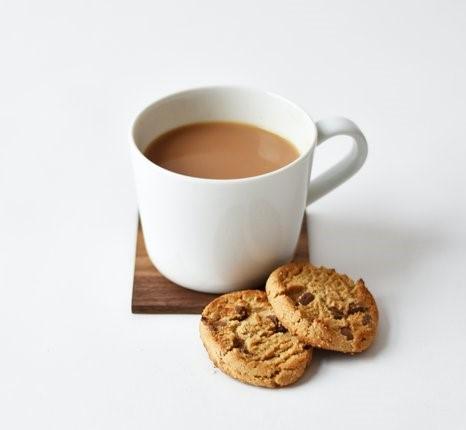
A mug of ‘Builder’s Tea’ with some biscuits
There is of course Afternoon Tea which is usually served at hotels, or at tea rooms, and consists of (of course) a pot of tea, served alongside a three-tiered plate with sandwiches, small cakes, and scones. Afternoon tea is considered a formal occasion, and often attracts tourists as a ‘quintessentially British tradition’. In the southwest of England, you can also find the ‘cream tea’. This is a less formal version of afternoon tea, and is simply a cup of tea served alongside a scone, clotted cream, and jam.
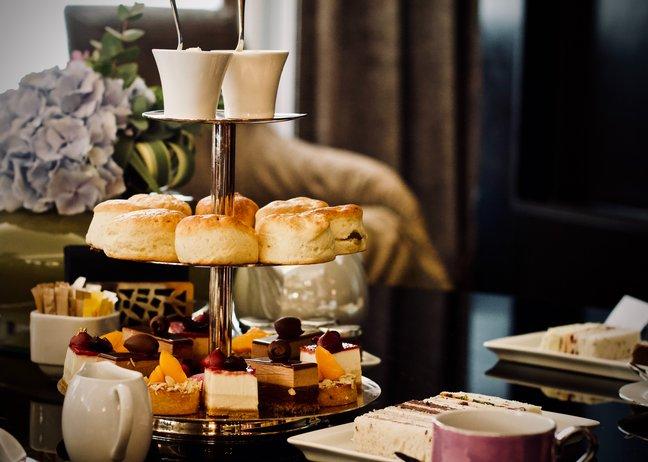
A selection of cakes, scones, and sandwiches served for afternoon tea.
There is also a phenomenon called the TV Pickup. This is when large numbers of people are watching the same tv show, so the electricity grid needs to be boosted as everyone goes to put the kettle on at the same time during advert breaks. This typically occurs during sporting events, soap operas, or national holiday broadcasts. The largest ever TV pickup recorded was in 1990 during the penalty shootout of the FIFA world cup semi-final between England and West Germany.
Tea has become so ingrained in British society, that in parts of the country, particularly the north of England, Scotland, and Wales, many people refer to the evening meal informally as tea. The majority of tea consumed in the UK today is black tea produced in Kenya, although herbal and green tea is growing in popularity. Of course coffee shops both big and small sell chai lattes and matcha lattes, so there is a growing interest in both these teas (although there is an abundance of rather poor quality matcha available, so people typically drink matcha in a latte, rather than straight).
Tea is a huge part of British culture. Although typically lower quality black tea is the drink of choice, there is a growing interest in both Chinese and Japanese tea, particularly green and oolong teas, as well as matcha.
Sophie Beavan-Vaughan

